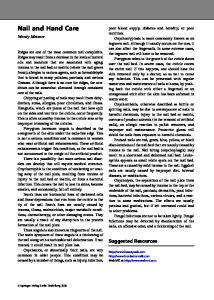Investigation of relationship between accelerated ultraviolet radiation aging in laboratory and weathering aging for asp
- PDF / 1,243,137 Bytes
- 7 Pages / 595.32 x 841.92 pts (A4) Page_size
- 108 Downloads / 286 Views
International Journal of Pavement Research and Technology Journal homepage: www.springer.com/42947
Investigation of relationship between accelerated ultraviolet radiation aging in laboratory and weathering aging for asphalt binder Shihui Guoa*, Yin Zhangb, Huang Tangc a College
of Civil Engineering, Nanyang Institute of Technology, Nanyang 473000, China of Civil Engineering, Henan University of Engineering, Zhengzhou 451191, China c College of Civil Engineering, Hunan City University, Yiyang 413000, China
b College
Received 24 May 2020; received in revised form 24 August 2020; accepted 26 September 2020
Abstract
The weathering aging pattern is a time-consuming aging method although it is accessible to asphalt actual field aging conditions. The accelerated ultraviolet (UV) radiation aging in laboratory shows the same aging factors (such as heat, oxygen and UV radiation) as weathering aging, which can make the accelerated UV radiation aging in laboratory become a potential alternative to weathering aging. Therefore, it is necessary to build the equivalent relationship between these two aging patterns and then to shorten the required weathering aging durations by accelerated UV r adiation aging simulation. Two types of base asphalt binder were selected as research objects and the evolution of their rheological properties including complex modulus (G*), phase angle (δ) and zero shear viscosity (ZSV) with indoor accelerated UV radiation aging durations was investigated. Then, based on logarithmic zero shear viscosity (log (ZSV)) values, the relationship between accelerated UV radiation aging and weathering aging of asphalt binder was built by uti lization of tworeaction kinetic aging model and extrapolation of accelerated aging result to weathering aging result. Furthermore, the equivalent relationship between the two aging patterns was further validated in terms of molecular weight distribution and carbonyl index results. The results in dicate that with the increase in accelerated UV aging time, values of complex modulus and zero shear viscosity gradually increase whereas values of phase angle decrease for both two base asphalt binders. The changing trend of log (ZSV) value with UV aging time fits well with two-reaction kinetic aging model. The 18-month weathering aging is demonstrated to be almost equivalent to 16~18-day accelerated UV aging by analyzing rheological, molecular weight distribution and carbonyl index results. Keywords: Asphalt binder; Weathering aging; Ultraviolet radiation aging; Rheological properties; Hardening susceptibility; Equivalent relationship
1. Introduction As an important constituent, asphalt binder endows viscoelastic performance with asphalt mixture and so plays a crucial role in whole performance of asphalt mixture [1, 2]. Nevertheless, like other organic materials, the asphalt binder is susceptible to being aged under influence of heat, oxygen and ultraviolet radiation, which induces asphalt pavement distresses like cracking and moisture susceptibility, and seriously deteriorates
Data Loading...











